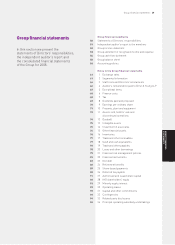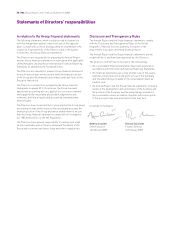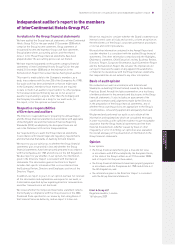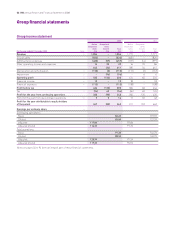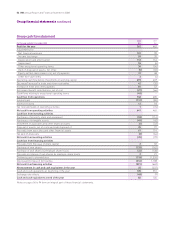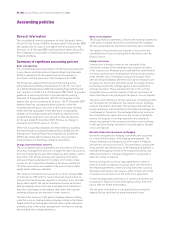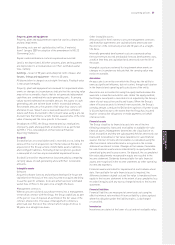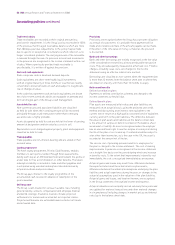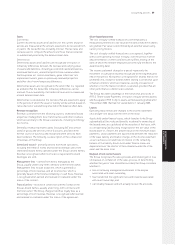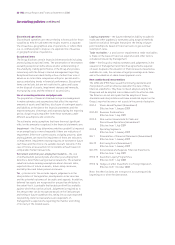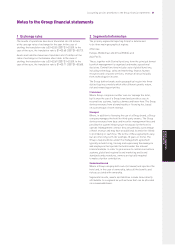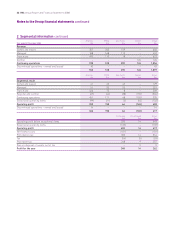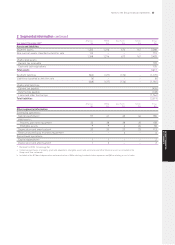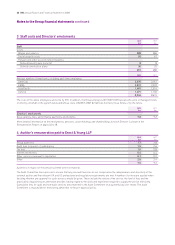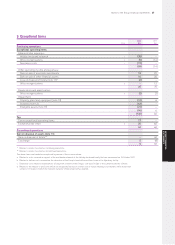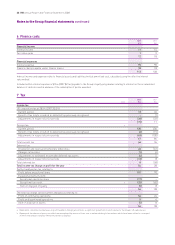Holiday Inn 2008 Annual Report Download - page 61
Download and view the complete annual report
Please find page 61 of the 2008 Holiday Inn annual report below. You can navigate through the pages in the report by either clicking on the pages listed below, or by using the keyword search tool below to find specific information within the annual report.
Accounting policies 59
Taxes
Current tax
Current income tax assets and liabilities for the current and prior
periods are measured at the amount expected to be recovered from
or paid to the tax authorities including interest. The tax rates and
tax laws used to compute the amount are those that are enacted
or substantively enacted by the balance sheet date.
Deferred tax
Deferred tax assets and liabilities are recognised in respect of
temporary differences between the tax base and carrying value
of assets and liabilities, including accelerated capital allowances,
unrelieved tax losses, unremitted profits from overseas where
the Group does not control remittance, gains rolled over into
replacement assets, gains on previously revalued properties
and other short-term temporary differences.
Deferred tax assets are recognised to the extent that it is regarded
as probable that the deductible temporary differences can be
realised. The recoverability of all deferred tax assets is reassessed
at each balance sheet date.
Deferred tax is calculated at the tax rates that are expected to apply
in the periods in which the asset or liability will be settled, based on
rates enacted or substantively enacted at the balance sheet date.
Revenue recognition
Revenue is derived from the following sources: owned and leased
properties; management fees; franchise fees and other revenues
which are ancillary to the Group’s operations, including technology
fee income.
Generally, revenue represents sales (excluding VAT and similar
taxes) of goods and services, net of discounts, provided in the
normal course of business and recognised when services have
been rendered. The following is a description of the composition
of revenues of the Group.
Owned and leased – primarily derived from hotel operations,
including the rental of rooms and food and beverage sales from
owned and leased hotels operated under the Group’s brand names.
Revenue is recognised when rooms are occupied and food and
beverages are sold.
Management fees – earned from hotels managed by the
Group, usually under long-term contracts with the hotel owner.
Management fees include a base fee, which is generally a
percentage of hotel revenue, and an incentive fee, which is
generally based on the hotel’s profitability or cash flows. Revenue
is recognised when earned and realised or realisable under the
terms of the contract.
Franchise fees – received in connection with the license of the
Group’s brand names, usually under long-term contracts with
the hotel owner. The Group charges franchise royalty fees as a
percentage of room revenue. Revenue is recognised when earned
and realised or realisable under the terms of the agreement.
Share-based payments
The cost of equity-settled transactions with employees is
measured by reference to fair value at the date at which the shares
are granted. Fair value is determined by an external valuer using
option pricing models.
The cost of equity-settled transactions is recognised, together
with a corresponding increase in equity, over the period in which
any performance or other conditions are fulfilled, ending on the
date on which the relevant employees become fully entitled to the
award (vesting date).
The income statement charge for a period represents the
movement in cumulative expense recognised at the beginning and
end of that period. No expense is recognised for awards that do not
ultimately vest, except for awards where vesting is conditional upon
a market condition, which are treated as vesting irrespective of
whether or not the market condition is satisfied, provided that all
other performance conditions are satisfied.
The Group has taken advantage of the transitional provisions of
IFRS 2 ‘Share-based Payments’ in respect of equity-settled awards
and has applied IFRS 2 only to equity-settled awards granted after
7 November 2002 that had not vested before 1 January 2005.
Leases
Operating lease rentals are charged to the income statement
on a straight-line basis over the term of the lease.
Assets held under finance leases, which transfer to the Group
substantially all the risks and benefits incidental to ownership of
the leased item, are capitalised at the inception of the lease, with
a corresponding liability being recognised for the fair value of the
leased asset or, if lower, the present value of the minimum lease
payments. Lease payments are apportioned between the reduction
of the lease liability and finance charges in the income statement
so as to achieve a constant rate of interest on the remaining
balance of the liability. Assets held under finance leases are
depreciated over the shorter of the estimated useful life of the
asset and the lease term.
Disposal of non-current assets
The Group recognises the sales proceeds and related gain or loss
on disposal on completion of the sales process. In determining
whether the gain or loss should be recorded, the Group considers
whether it:
• has a continuing managerial involvement to the degree
associated with asset ownership;
• has transferred the significant risks and rewards associated
with asset ownership; and
• can reliably measure and will actually receive the proceeds.
GROUP FINANCIAL
STATEMENTS


